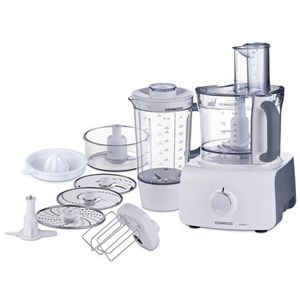6 Myths About Food Processor
METHODOLOGY
We tested eight food processors with capacities of 11 to 14 cups, rating them on their ability to chop,
Slice, shred, mince, emulsify, puree, and mix pie crust and pizza dough, and perform other
Frequent activities that call for a food processor. We also rated them on ease of use and cleanup. We
Purchased all models online. They appear in order of preference.
CHOPPING: Testers chopped onion, carrot, and celery into mirepoix; ground whole almonds; minced
Fresh parsley; and ground beef chunks and butter into hamburger. This category was weighted most
SLICING: We sliced ripe plum tomatoes and russet potatoes, giving highest marks to models that cut
crisply and neatly, rendering little to no juice, which would indicate that food was sliced, not crushed.
SHREDDING: We shredded carrots and cheddar cheese, rating models highest if pieces were crisp and
uniform with little to no unprocessed, trapped food.
MIXING: We mixed pie dough and a double batch of heavy pizza dough, made mayonnaise (in small
workbowls where available), and conducted a timed test using drops of blue and yellow food coloring in
Yogurt to reveal how efficiently machines made a uniformly green mixture.
PUREEING: We processed large cans of whole tomatoes in each machine until smooth; high-rated
models made velvety puree.
EASE OF USE: We rated each machine throughout testing on its handling, intuitiveness of assembly and
controls, shape of workbowl and lid, weight and stability, quality of construction, noise, and other
Factors regarding its design and ergonomics, including the convenience of any included accessory boxes
Or other extra features.
LEAKING: We filled each machine to its "maximum liquid fill" line and compared actual to stated
capacity; we then ran machines on high for 1 minute, checking for leaks.
We tested eight food processors with capacities of 11 to 14 cups, rating them on their ability to chop,
Slice, shred, mince, emulsify, puree, and mix pie crust and pizza dough, and perform other
Frequent activities that call for a food processor. We also rated them on ease of use and cleanup. We
Purchased all models online. They appear in order of preference.
CHOPPING: Testers chopped onion, carrot, and celery into mirepoix; ground whole almonds; minced
Fresh parsley; and ground beef chunks and butter into hamburger. This category was weighted most
SLICING: We sliced ripe plum tomatoes and russet potatoes, giving highest marks to models that cut
crisply and neatly, rendering little to no juice, which would indicate that food was sliced, not crushed.
SHREDDING: We shredded carrots and cheddar cheese, rating models highest if pieces were crisp and
uniform with little to no unprocessed, trapped food.
MIXING: We mixed pie dough and a double batch of heavy pizza dough, made mayonnaise (in small
workbowls where available), and conducted a timed test using drops of blue and yellow food coloring in
Yogurt to reveal how efficiently machines made a uniformly green mixture.
PUREEING: We processed large cans of whole tomatoes in each machine until smooth; high-rated
models made velvety puree.
EASE OF USE: We rated each machine throughout testing on its handling, intuitiveness of assembly and
controls, shape of workbowl and lid, weight and stability, quality of construction, noise, and other
Factors regarding its design and ergonomics, including the convenience of any included accessory boxes
Or other extra features.
LEAKING: We filled each machine to its "maximum liquid fill" line and compared actual to stated
capacity; we then ran machines on high for 1 minute, checking for leaks.

Комментарии
Отправить комментарий